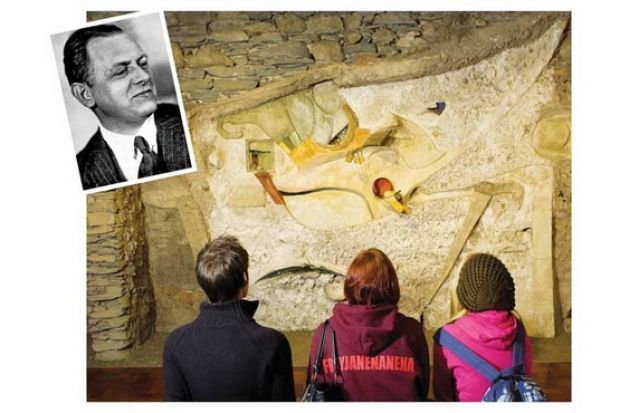This wall forms part of the third and last Merzbau (or sculptural installation), constructed by the celebrated collagist Kurt Schwitters in his Lake District barn. It is now on permanent display in Newcastle University’s Hatton Gallery.
Schwitters (1887-1948) spent most of his life within the German avant-garde, creating sculptures, sound poems and collages that often incorporate ephemeral found objects such as bus tickets and scraps of newspaper. In the 1920s, he also took over several rooms in the family house in Hanover to produce his first Merzbau.
Forced into exile by the rise of the Nazis, Schwitters fled to Norway and then Scotland; after a period interned as an enemy alien on the Isle of Man, he moved to London and eventually settled in Ambleside. It was there that he began work on his sole surviving Merzbau, which was left incomplete at the time of his death and rescued by Richard Hamilton, then a lecturer in fine art at Newcastle University. Although the dry-stone wall could not be dismantled, art student Fred Brookes was able to oversee its transfer to the Hatton Gallery.
Send suggestions for this series on the treasures, oddities and curiosities owned by universities across the world to matthew.reisz@tsleducation.com
